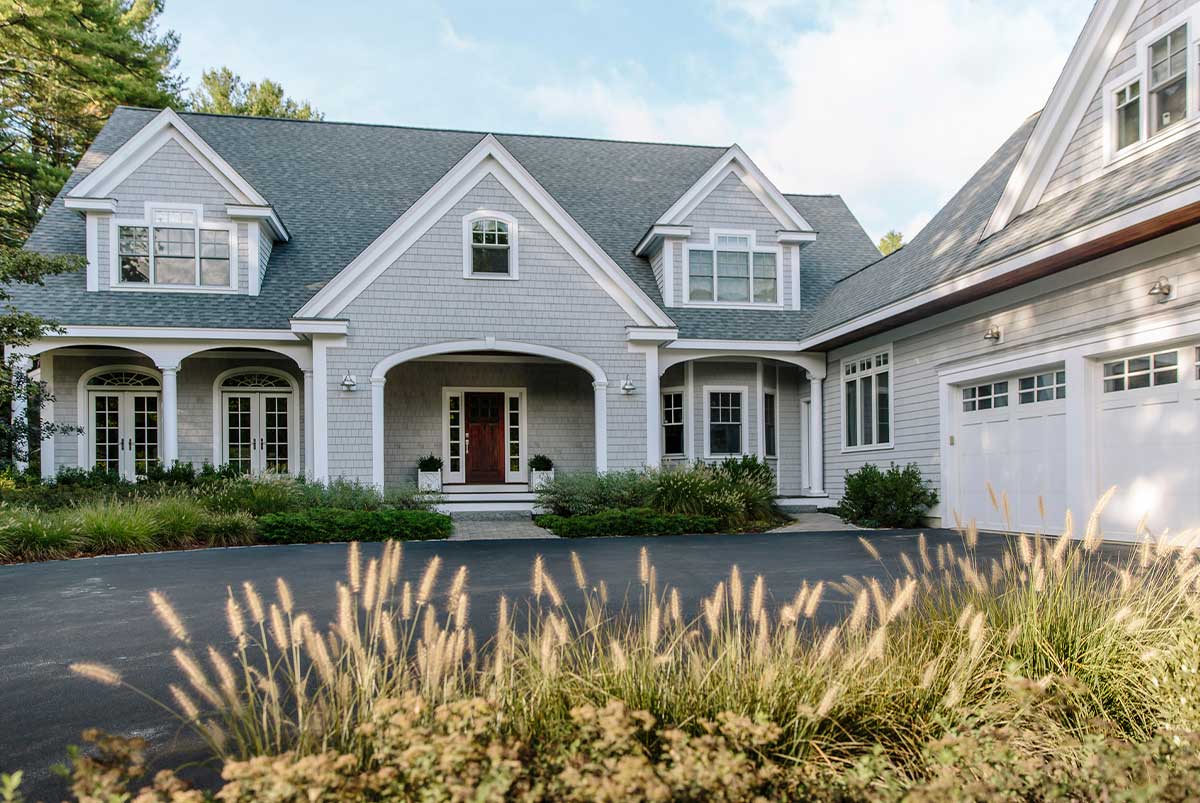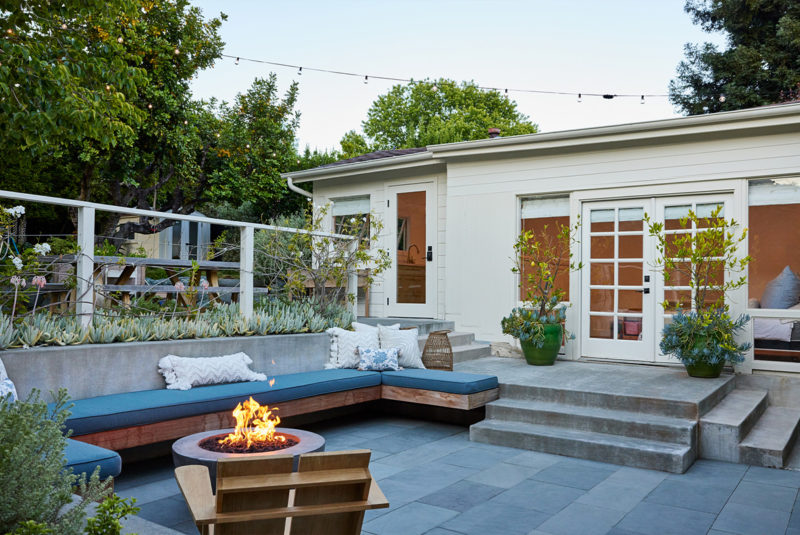Ready To Buy a Home?
Get Approved to Buy a Home
Rocket Mortgage® lets you get to house hunting sooner.
Homeowners insurance is an invaluable safety net for homeowners. While the monthly cost of homeowners insurance is not something most people want to deal with, making your payments every month can help protect you from financial disaster.
Homeowners insurance (aka hazard insurance or home insurance) is not mandated by federal or state law, but most mortgage lenders require the insurance to get a home loan. Even if you buy a home with cash, homeowners insurance is still a must.
So why is homeowners insurance so important?
We’ll explain why and share common factors that can affect your premium and give you tips on how to save money on your policy.
What Is Homeowners Insurance?
Like all insurance, homeowners insurance is a contract. The insurer agrees to protect the insured against unexpected financial loss. Homeowners insurance has two purposes:
It protects the home and other assets
Homeowners insurance provides financial protection for a homeowner in case of certain perils or catastrophic events (think: fire or burglary). It also shields you from liability if someone gets hurt on your property.
It protects the lender’s stake in the home
Homeowners insurance protects the lender’s financial investment in the home, ensuring a lender will be repaid even if the home is damaged or destroyed.
What Does a Homeowners Insurance Policy Provide?
Home insurance coverage can help protect homeowners in a variety of situations. The insurance company (aka the insurance carrier or insurer) will typically reimburse a homeowner for most of their costs to fix any covered destruction or damage.
Homeowner policies differ widely because they are customized to fit the needs of a specific homeowner and lender.
Standard homeowners insurance policies typically offer or cover:
- Damage to your home: Your policy will pay to repair damage to the exterior and interior of your home if a covered event, like a tornado or vandalism, occurs. If your home needs to be rebuilt, your policy will compensate you for the construction.
- Repair or replacement of your belongings: Most of the items inside your home, like your furniture and clothes, are covered by a standard homeowners policy. Your belongings are generally covered from 50% to 70% of the amount of insurance you have for the home.[1]
- Liability coverage: Your homeowners insurance policy generally protects you from lawsuits if you or your pets unintentionally injure someone either at or away from the home or if you damage someone else’s property.
- Additional living expenses: Homeowners insurance will cover the cost of additional living expenses for everyone living in the home if they’re displaced due to a covered event.
Most home insurance policies can be customized to your needs with riders and other modifications, allowing you to better personalize your coverage.
How Much Does Homeowners Insurance Cost?
Nationwide, the average cost of a standard homeowners insurance policy is approximately $1,272 a year (around $106 a month). But the average cost can vary by state.[2]
The five most expensive states for home insurance are[2] [3]:
- Louisiana: $2,037
- Oklahoma: $2,000
- Florida: $1,988
- Texas: $1,982
- Rhode Island: $1,731
The five cheapest states for home insurance are[2] [3]:
- Oregon: $727
- Utah: $743
- Wisconsin: $750
- Nevada: $791
- Idaho: $799
But no matter what state your home is in, what you pay for your policy will depend on a host of other factors.
What Factors Affect the Cost of Homeowners Insurance?
The cost of homeowners insurance primarily depends on the risk to an insurance company. An insurer will weigh how likely it is that a homeowner will file a claim (a request to pay you for a covered loss or damage).
Insurers consider several factors when creating a homeowner’s risk profile. A high-risk profile signals a greater chance of a claim being filed and higher estimated costs to reimburse the homeowner for any damage or liability – and this will result in a high-priced insurance policy.
Here are some of the most common factors used to determine the cost of a homeowners insurance policy:
Past claims
If you filed a claim with your current insurer, filed claims when you lived in another home or the previous owner(s) of your current home filed claims, your rate will probably be higher.
Why? Well, it’s been shown that people who file claims are more likely to file again. And, if there were past problems in the home that caused a claim to be filed, the chances are greater that there are other problems in the home.
More than one claim filed for the same peril (wind damage, water damage, etc.) is another red flag to insurers that they can expect similar claims to be filed in the future. Another rate raiser? Severe claims, like a total rebuild of your home, are very likely to raise your rate.
Location of the home
Your insurance carrier will look closely at the location of your home. Is it in a high-crime area? Is the area prone to tornadoes? Is the home near a fire station and hydrant?
All of these situations point right back to risk.
To an insurer, a home in a high-crime area is more likely to experience crimes like vandalism or theft.
A home in an area plagued by tornados is more likely to be damaged by one. A home near a fire station is considered less likely to sustain extensive fire damage than a house fifty miles away. (FYI: Your insurance company may even check if your local station is staffed by professional firefighters or volunteers.)
The cost of rebuilding or repairing a home will also vary by location. Labor and the cost of materials will depend, in large part, on where the home is located.
The home’s age and condition
As a rule, older homes generally carry more risk of a damaging event than newer homes. Faulty wiring, flammable materials and old heating systems will likely lead to a higher premium.
On the flip side, homes with upgraded electrical systems, a new roof or a security system that rivals Fort Knox would likely lower a home’s insurance premium.
The amount of coverage and the deductible
When you get an insurance policy, the cost is determined based on the specifics of the policy. Here are a few things to look out for:
- Premiums: This is what you pay to the insurance company every year. The more you pay, the better your coverage.
- Deductibles: This is what you pay out-of-pocket before the insurance company starts paying. A deductible of $1,500 will have a lower premium than the same policy with a $500 deductible. You’ll pay more money out of pocket with a higher deductible.
- Liability limits: Each homeowners policy has a liability limit. It’s the maximum amount an insurance company will pay toward damages after any deductibles.
- Dwelling limit: Most homeowners insurance policies will cover your home’s total replacement value or the cost to physically replace your home – not the current market value of the home. If your home has appreciated in value, it may make sense to get it insured again.
Homes that cost more to replace have higher dwelling limits (the amount insurance will pay to rebuild your home), higher premiums or policies with higher deductibles. Other areas of coverage are usually expressed as percentages of a home’s replacement value. For example, personal property limits are usually set at 50% of a home’s replacement value.[4]
Your credit history
In most states, insurance companies use a credit-based insurance score to help them create your risk profile and determine what you’ll pay in insurance costs.
By the way, your insurance score is not the same credit score you’re assigned by the traditional credit reporting agencies. The factors that go into calculating your insurance score, and their percentage of importance on your score, are different.
Dogs and outdoor features that could cause injury
No one needs to tell you how sweet, lovable and adorable your dog is. But some dog breeds are more likely to cause injury than others. If your pooch happens to be one of those breeds, you’ll probably pay more for homeowners insurance.
Got a swimming pool or trampoline? Be prepared to pay more for home insurance. Insurance companies are typically not fans of these features. They may be fun, but they make your property more dangerous and increase the likelihood of a claim.
Additional insurance
A standard insurance policy may not cover everything a homeowner wants covered.
For example, a homeowner may want additional coverage if the home is in an area where flooding is likely. Flooding is typically not covered by homeowners insurance. Homeowners usually have to get a separate policy for that particular peril.
Owners may also want more coverage for belongings like expensive jewelry or artwork with a value that exceeds what’s covered in a standard policy. This type of additional insurance is usually an endorsement or rider. It’s an add-on to the primary policy that provides more coverage where the primary policy falls short.
Separate policies and endorsements will add to the cost of insuring your home.
How Can You Save Money on Homeowners Insurance?
You know what can raise the cost of your homeowners insurance policy. Now let’s see what you can do to reduce it.
Compare policies and insurers
Shopping around for your insurance company is time well spent – but don’t focus exclusively on the dollars and cents. Look for an insurance carrier that will respond to your questions and concerns and assist you if you need help filing a claim.
You’ll also want to confirm that your carrier is in good financial standing. The National Association of Insurance Commissioners is a good resource for investigating insurance carriers. It’s also worth checking out Standard & Poor’s or Moody’s. These companies rate insurance carriers on their financial health.
Provider discounts for bundling insurance products
Insurers will often give discounts for bundling products. If you get your homeowners policy and your auto insurance from the same place, they may knock 5% – 15% off the premium of each policy.[4]
Replacement cost vs. Actual cash value
Most homeowners insurance policies use actual cash value (ACV) as the standard for personal property coverage and replacement cost value (RCV) for dwelling coverage.
ACV replaces your property’s value but subtracts depreciation. RCV replaces items with something similar at current prices. ACV provides less coverage, but it tends to be cheaper than RCV.
Negotiating the type of property replacement you get could save you money if trading less coverage for a lower premium works for you.
Add safety and security features
Installing a security system, upgrading smoke detectors and putting stronger locks around your home can reduce your premium. Depending on how sophisticated your security system is, you could get a discount of 15% – 20% on your premium.[5]
Improve your credit score
Your credit score is one of several factors insurance underwriters will consider. Although it may take a while to show up in your credit history, improving your credit can help lower your premium.
Use the same insurance carrier you’ve been using
Some insurance companies reward loyalty. If you’ve been using the same insurer for years, ask if they will give you a discount because you’re a long-term policyholder. Some insurers will give clients who have been customers for 6 years or more up to a 10% discount.[5]
Take an inventory
If your insurance policy covers specific personal belongings, it’s a good idea to take an annual inventory and jot down the value of each item. When you know what you have, you won’t end up paying insurance for items you no longer own or have lost their value.
Get Your Home Insurance Estimate
Now that you know all about homeowners insurance costs, you’ll be better prepared to ask prospective insurers the right questions. Pro tip: It’s always a good idea to get a few estimates. And it wouldn’t hurt to revisit your policy every year.
Make sure your policy is providing the coverage you need – but not too much! Then you can rest easy knowing your home and belongings are covered.
Get approved to buy a home.
Rocket Mortgage® lets you get to house hunting sooner.
The Short Version
- Homeowners insurance protects your home and your belongings and provides liability coverage
- A variety of factors go into calculating the cost of a homeowners insurance policy
- Compare several insurers before deciding on an insurance company for your homeowners policy
Insurance Information Institute. “What is covered by standard homeowners insurance?” Retrieved July 2022 from https://www.iii.org/article/what-covered-standard-homeowners-policy
National Association of Insurance Commissioners. “Dwelling Fire, Homeowners Owner-Occupied, and Homeowners Tenant and Condominium/Cooperative Unit Owner’s Insurance Report: Data for 2018 (2020).” Retrieved July 2022 from https://content.naic.org/sites/default/files/publication-hmr-zu-homeowners-report.pdf
Insurance Information Institute. “Facts + Statistics: Homeowners and renters insurance.” Retrieved July 2022 from https://www.iii.org/fact-statistic/facts-statistics-homeowners-and-renters-insurance#Homeowners%20insurance%20expenditures
National Association of Insurance Commissioners. “A Consumer’s Guide to Home Insurance.” Retrieved July 2022 from https://content.naic.org/sites/default/files/publication-hoi-pp-consumer-homeowners.pdf
Insurance Information Institute. “12 Ways to Lower Your Homeowners Insurance Costs.” Retrieved July 2022 from https://www.iii.org/article/12-ways-to-lower-your-homeowners-insurance-costs




